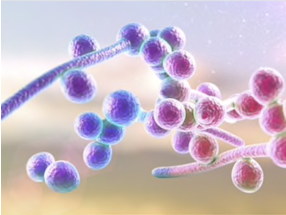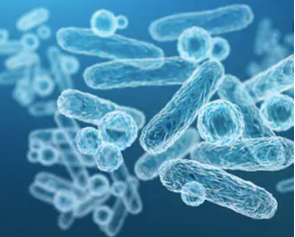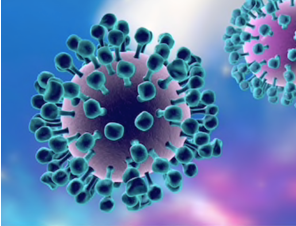Microorganisms Lipidomics in Drug Research
Lipidomics can provide changes in microbial lipids and related enzymes, which is important for drug research in microbiology. Using lipid metabolites and related enzymes as research targets to find new drug targets plays an important role in new drug development. Creative Proteomics provides lipidomics solutions to accelerate the progress of projects such as drug discovery, drug resistance studies, and drug mechanism of action studies.
Strategies for Lipidomic Analysis of Drug Research
Creative Proteomics designs experimental programs according to customer needs and chooses different technical methods to improve detection efficiency and ensure the accuracy and repeatability of experimental results.
Based on LC-MS/MS technology to simultaneously analyze hundreds of different lipids in biological samples to obtain more information. Through bioinformatics data analysis, we can systematically elucidate the variation at the lipidome level and the regulatory mechanisms in the experimental group compared to the control group from a lipid perspective.
Targeting specific lipid molecules and their metabolites in samples. Based on high-resolution mass spectrometry and isotope internal standard, we use parallel reaction monitoring (PRM) targeted analysis technology, which can realize the specific acquisition of signals of multiple lipid molecules (such as dozens of target lipid molecules) at the same time, and obtain their absolute contents to meet the needs of targeted detection and verification of target lipids. Using Orbitrap mass analyzer and ultra-high resolution mass spectrometry, high quality data can be obtained. Sensitivity up to ppm level and linearity range up to 5-6 orders of magnitude.
What Creative Proteomics Provides for Our Customers?
Send us your sample and receive data in 2-4 weeks, lower sample demand;
Professional and customized experimental design to meet your research requirements;
Creative Proteomics offers a report including experiment procedures, parameters of liquid chromatography and mass spectrometer, MS raw data files, MS data quality checks, metabolites quantification data and bioinformatics analysis (PCA, KEGG, etc).
Case
Case 1
The formation of C. parapsilosis perithelium was accompanied by upregulation of FAs2 gene when the environmental oxygen content was low. To address this phenomenon, some authors observed the growth of FAs2 knockout bacteria with exogenous addition of different long-chain FAs. The results showed that the virulence of the mutant bacterium was significantly reduced, and it could not produce unsaturated FA and form normal biofilm. It was also killed by macrophages, suggesting that FAs may be potential therapeutic targets. Lipidomics can provide information about the changes of microbial lipids and related enzymes, which can help to elaborate microbial-related mechanisms of action and play an important role in research in the field of microbiology.

Case 2
The formation of Candida albicans perithecia poses a significant therapeutic problem. Comparative lipidomic studies have shown that phospholipids and sphingolipids are significantly higher in periplasmic Candida albicans than in planktonic Candida albicans. This pathway was further confirmed to play a key role in perithecia formation by the addition of the sphingolipid metabolic pathway blocker polycocystin. Candida albicans developed resistance during long-term repeated administration of fluconazole. Lipidomic studies of sensitive and resistant bacteria showed significant differences in their lipid profiles, with phosphatidylglycerol being reduced. Phosphatidylglycerol was associated with mitochondrial function, and further studies showed impaired mitochondrial function and cell wall defects, suggesting that the mechanism of resistance is related to lipid metabolism, mitochondrial function and cell wall integrity.

Case 3
Positive-stranded RNA viruses use the host cell membrane to complete their genome replication. The virus is infected or replicated with upregulation of genes involved in lipid metabolism in the host cell. Lipidomics studies have shown significant changes in host phospholipids, particularly phosphatidylcholine (PC), during viral RNA replication. Similar findings were obtained using target genomics studies, suggesting that PC plays an important role in viral replication and that regulation of PC synthesis may be a new antiviral approach. Combining the genome with the lipidome and using statistical methods such as correlation and multivariate to study lipid changes in different states can help to precisely resolve the mechanism of lipid action and discover new targets for drug action.

If you have any questions about our microbial lipidomics services, welcome to contact us.
References:
- Lattif, A. A.; et al. Lipidomics of Candida albicans biofilms reveals phase-dependent production of phospholipid molecular classes and role for lipid rafts in biofilm formation. Microbiology. 2011, 157(Pt 11), 3232.
- Raghunandanan, S.; et al. Comparative label-free lipidomic analysis of Mycobacterium tuberculosis during dormancy and reactivation. Sci Rep. 2019, 9, 3660.
- Castorena KM.; et al. Complementary transcriptomic, lipidomic, and targeted functional genetic analyses in cultured Drosophila cells highlight the role of glycerophospholipid metabolism in Flock House virus RNA replication. BMC Genomics. 2010 Mar 17;11:183.
* Our services can only be used for research purposes and Not for clinical use.
Applications:






